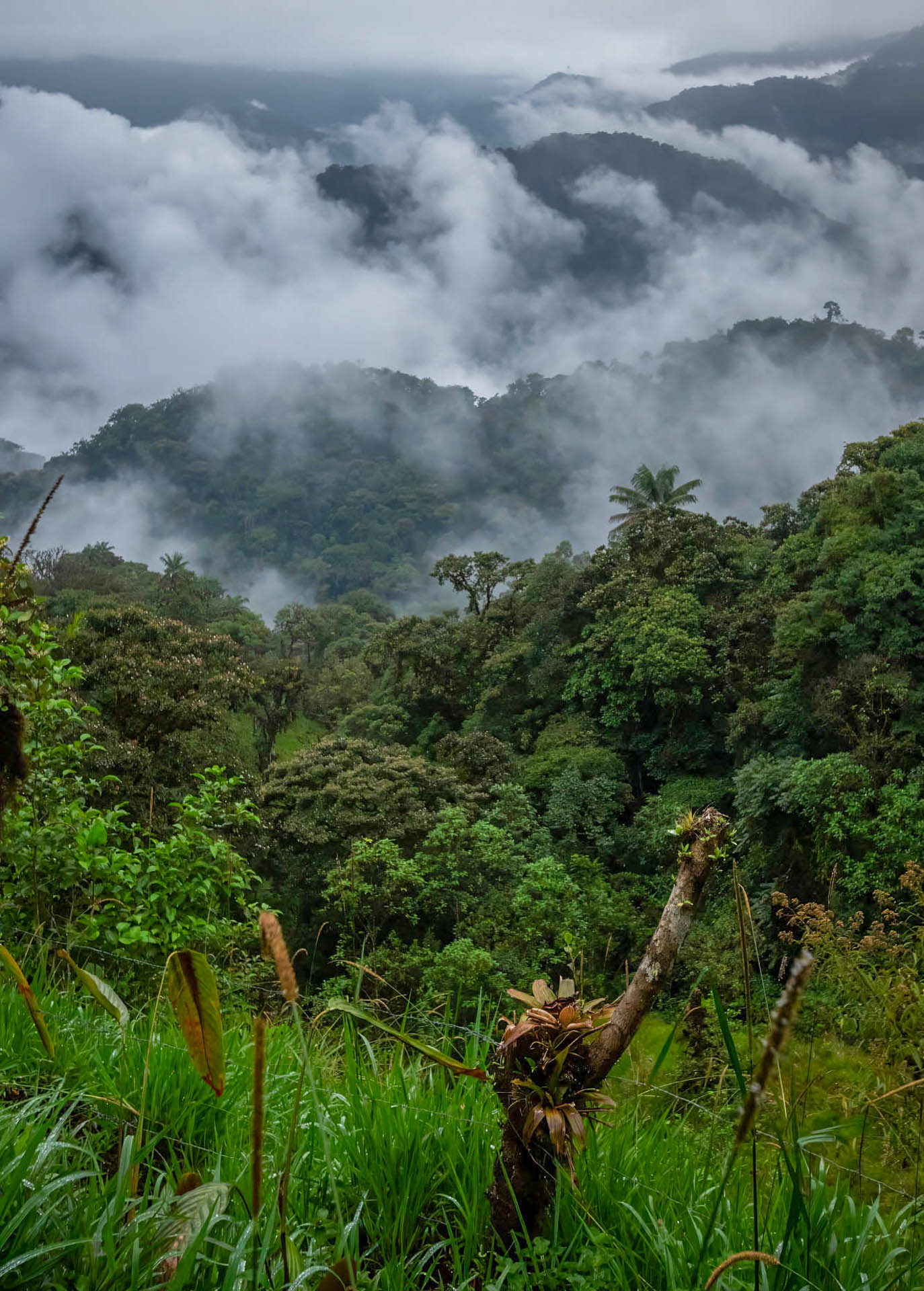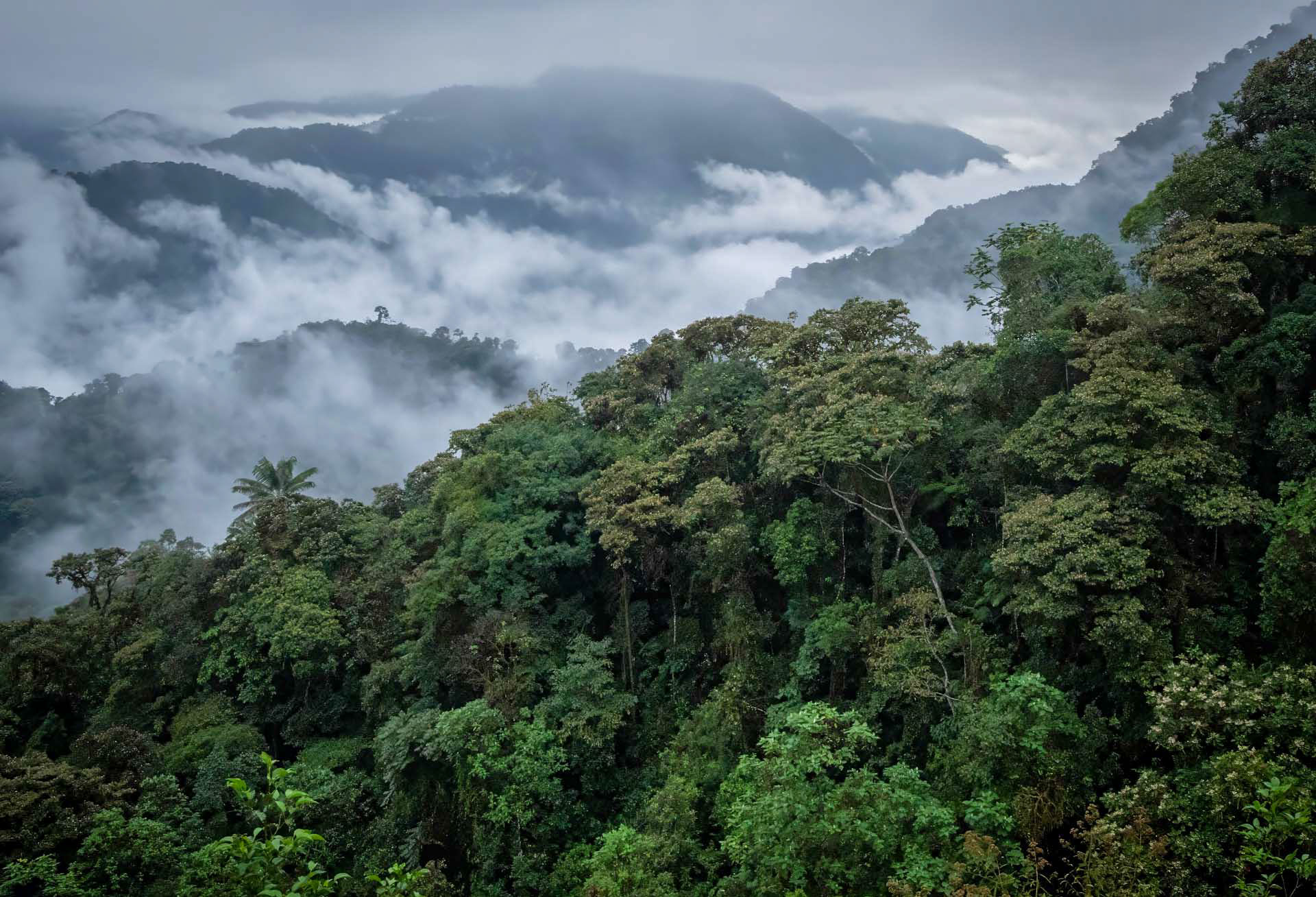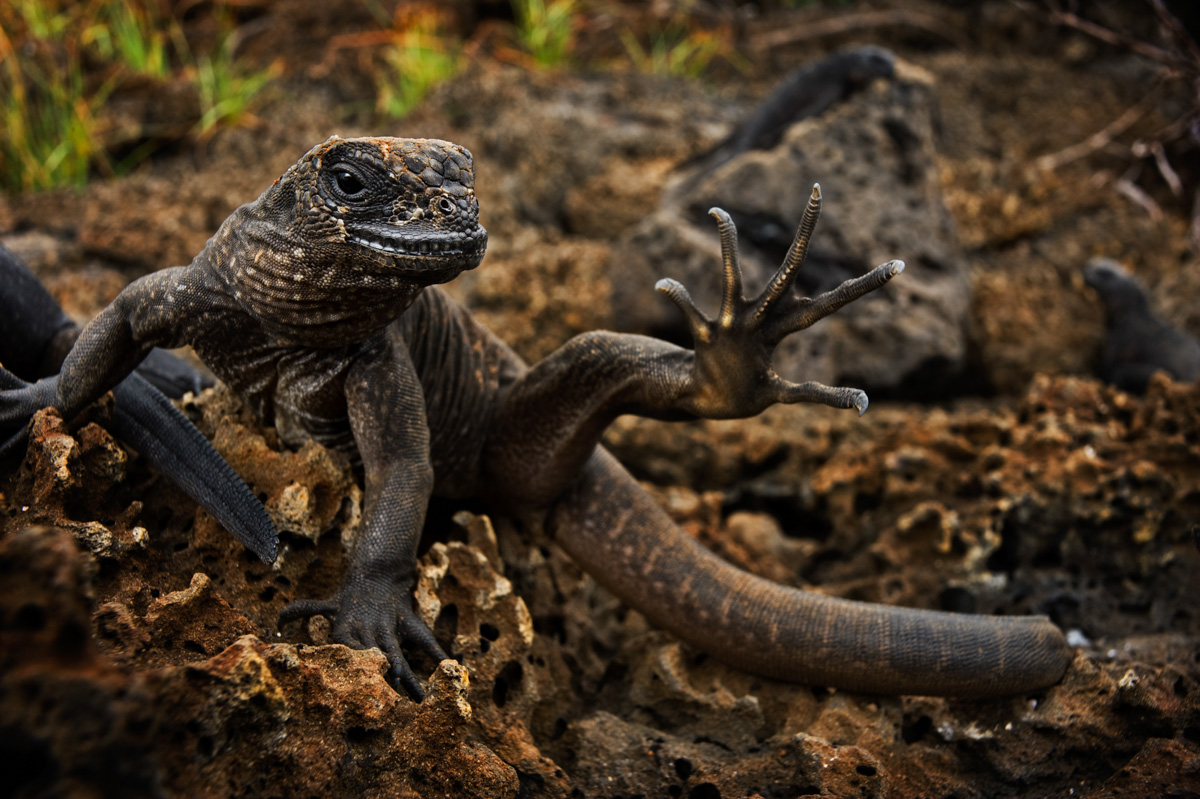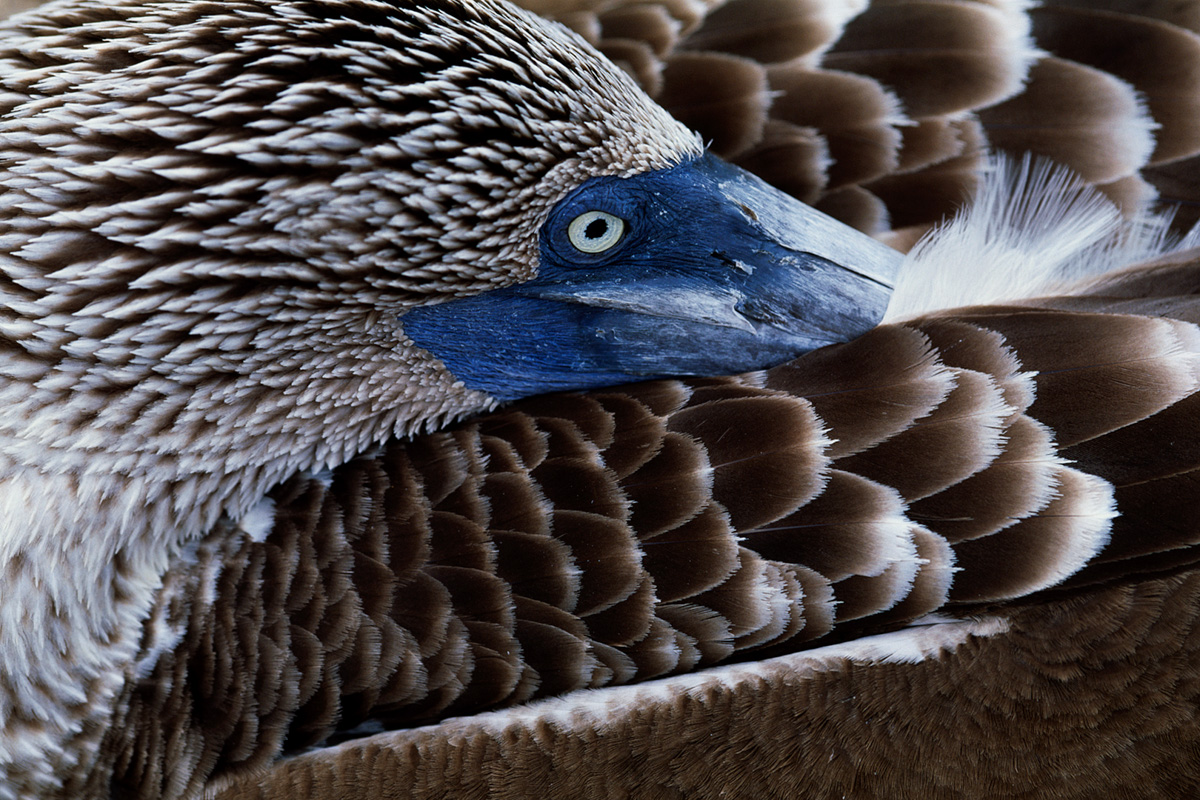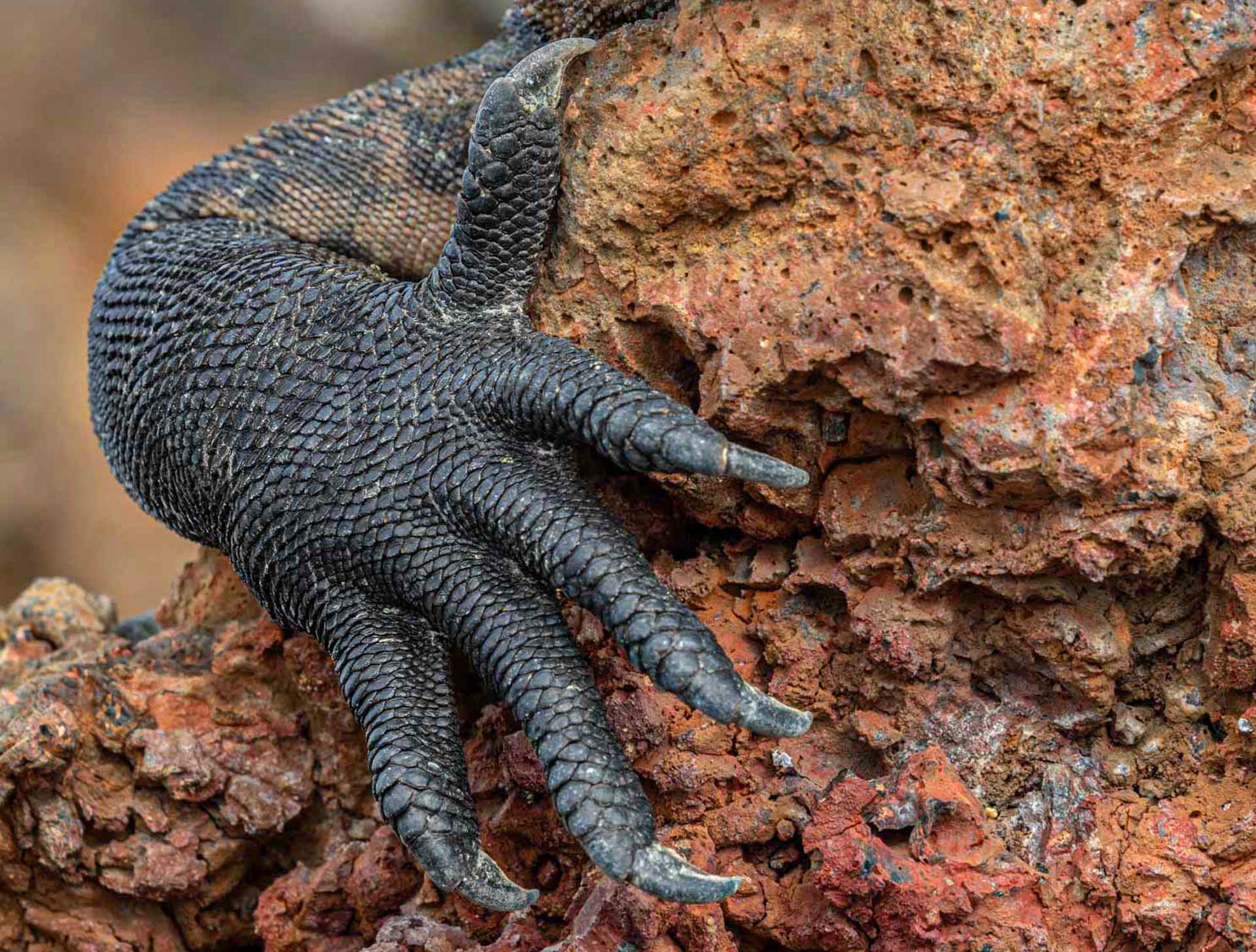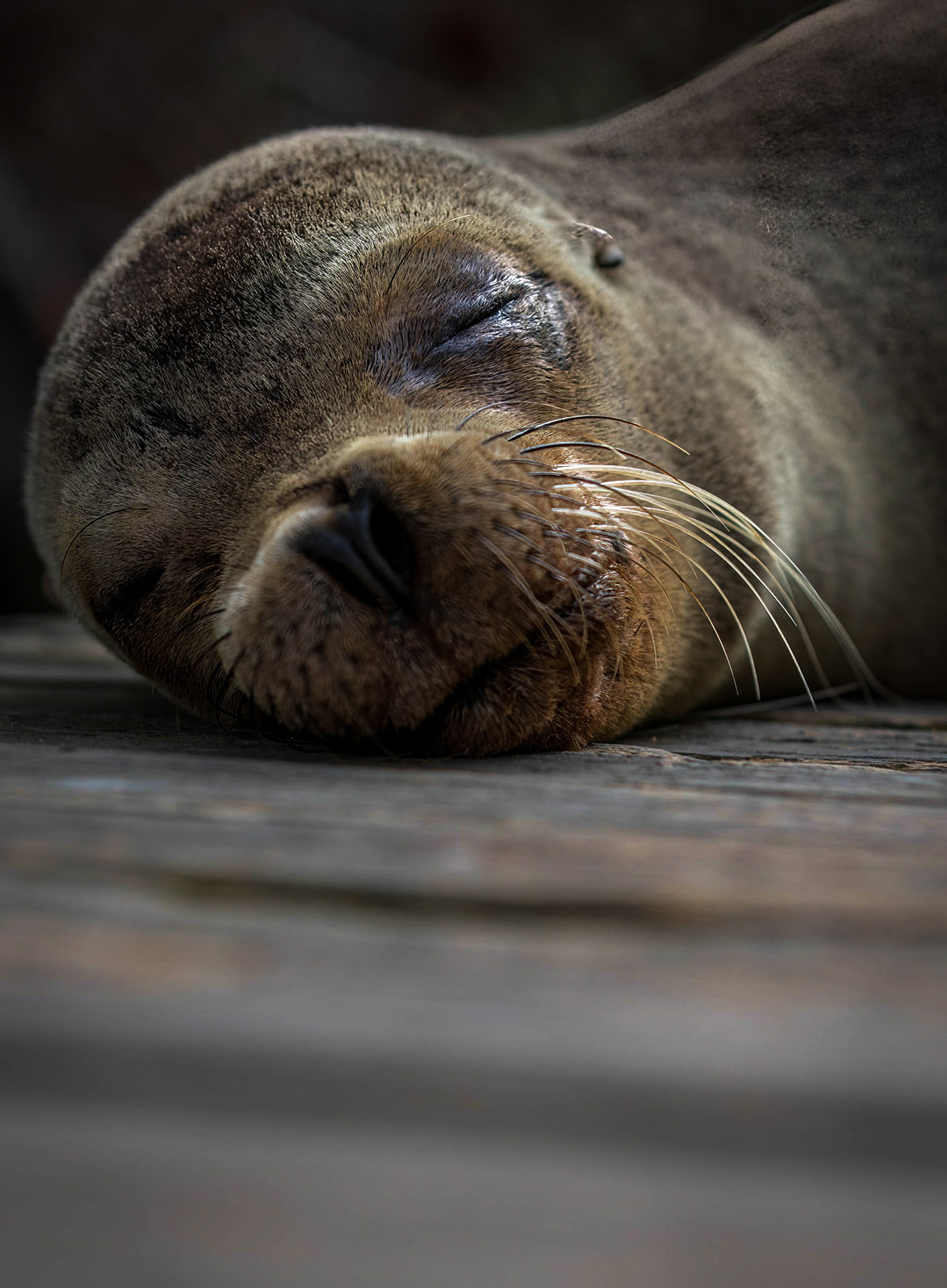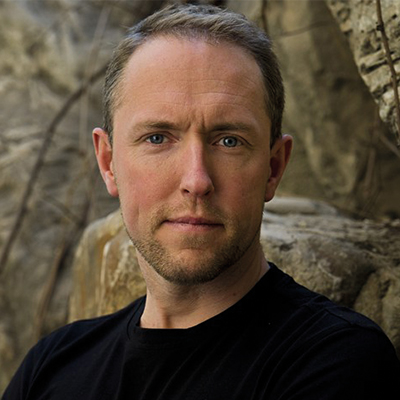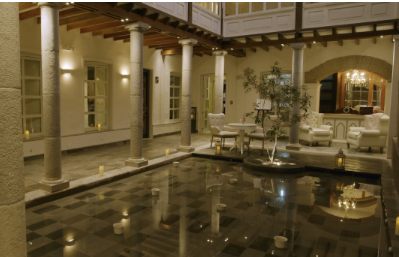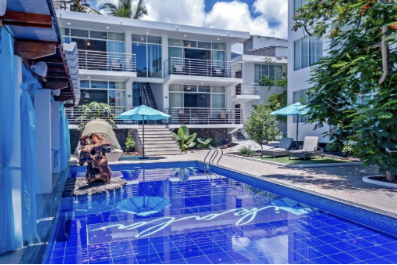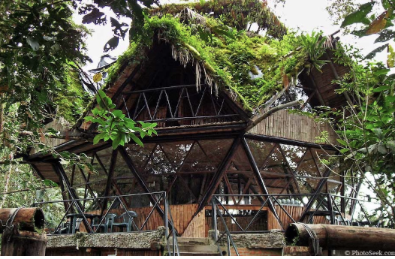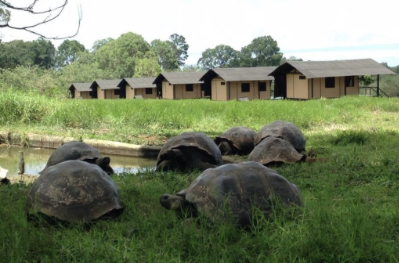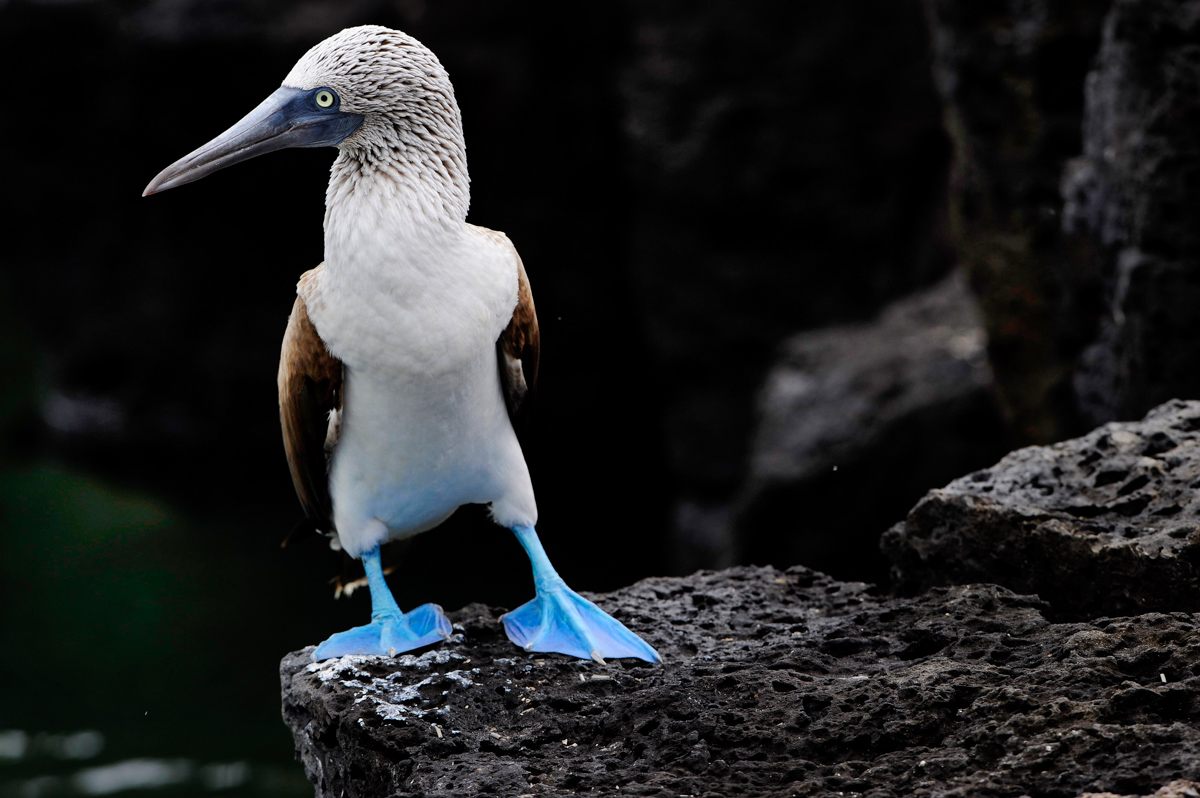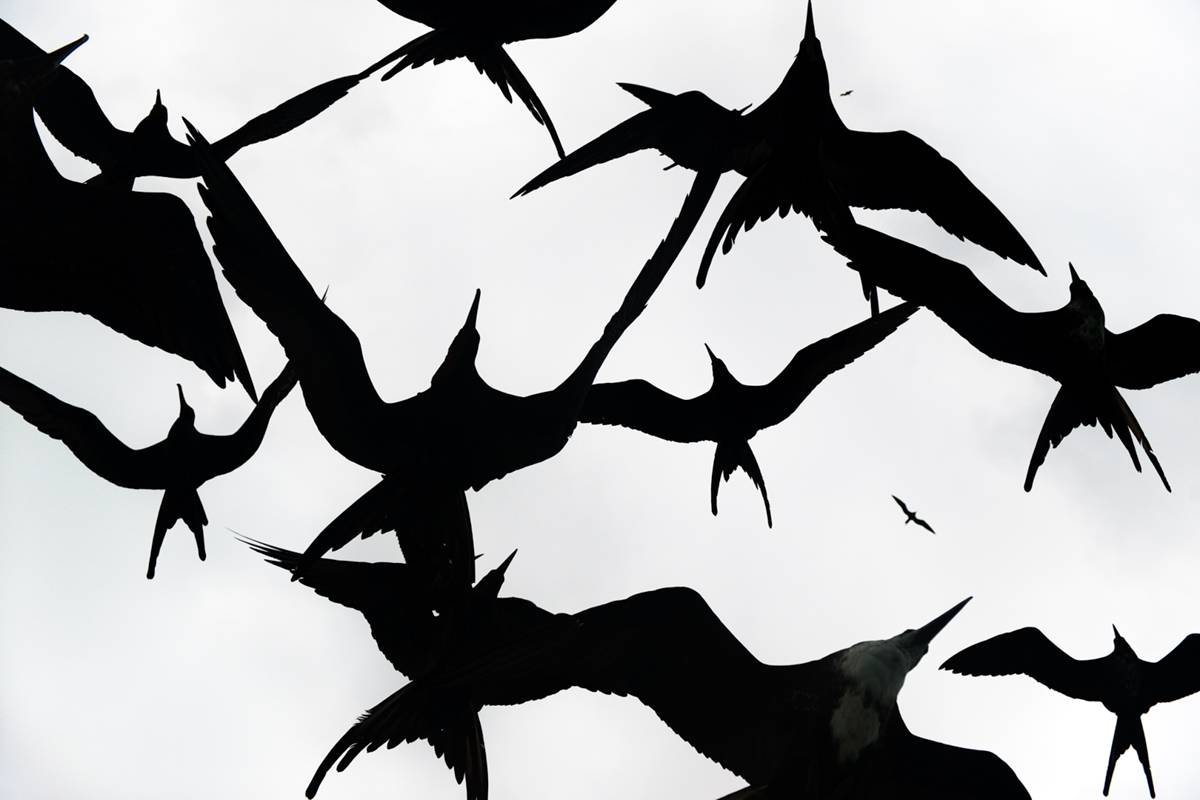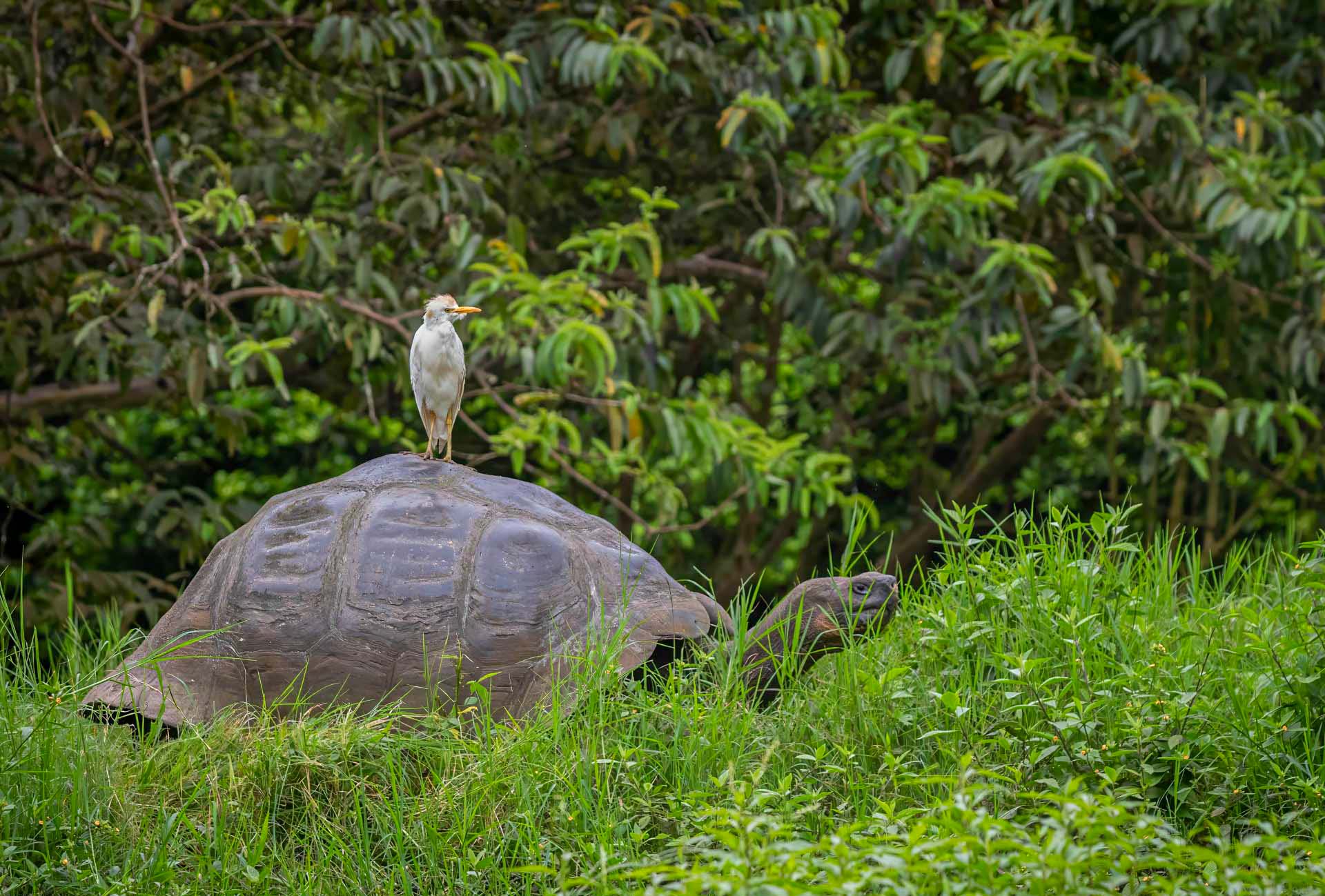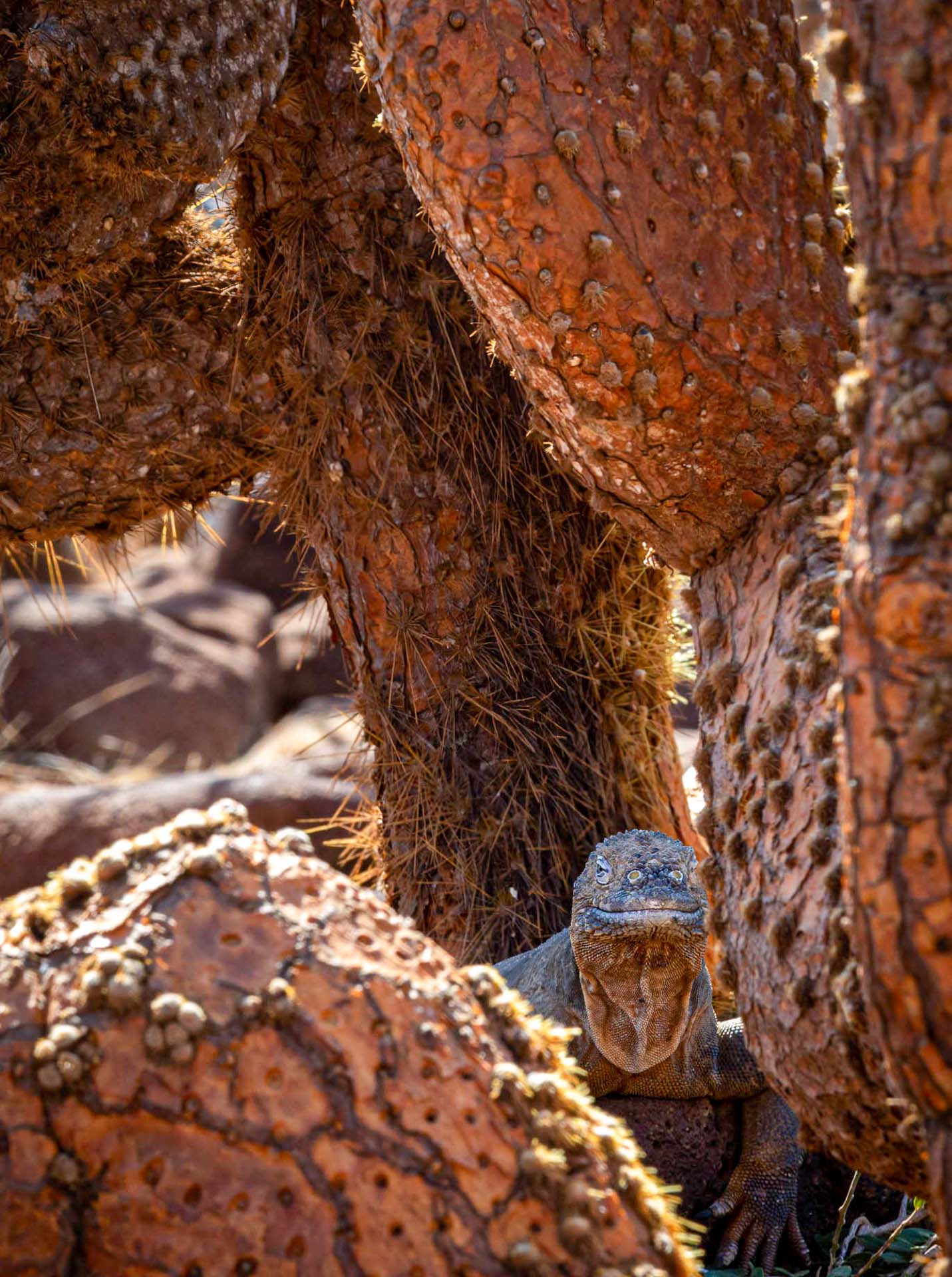COUNTRY: Equador PHOTO TYPE: Wildlife TRIP LENGHT: 10 days DATES: November 15-24, 2025 GROUP SIZE: 8-15 guests
GALAPAGOS – THE GARDEN OF EDEN
WITH NAT GEO PHOTOGRAPHER MATTIAS KLUM
The Galapagos Islands is an amazing destination. A fabulous wildlife with marine iguanas, giant turtles, penguins and sea lions guarantees spectacular photos and memories for life. I look forward to experiencing the wildlife on the Galapagos again. You are welcome to discover and take pictures with me.
Mattias Klum
World-renowned National Geographic photographer Mattias Klum will lead this journey following in the footsteps of Charles Darwin and the Beagle to the legendary Galapagos Islands. Here, Mattias has conducted several National Geographic missions with the aim of documenting its wildlife and highlighting the fragility and unique character of the islands. In few places in the world, you will encounter wildlife as intimately as in the Galapagos. Here, you will meet everything from the fascinating marine iguanas, the blue-footed boobies, giant tortoises, to curious sea lions. Beautiful and rugged landscapes alternate with lush greenery, black lava cliffs, and a ever-changing ocean. The Galapagos Islands are listed as a UNESCO World Heritage Site and are considered one of the most unique and biologically outstanding areas in the world.
During our days in Galapagos, we will visit several islands that offer different photographic opportunities and unique subjects every day. Throughout the days, we will also experience the underwater world around Galapagos.
We will also visit the Charles Darwin Foundation and learn more about their research and conservation efforts to save unique species on the islands. Several different species of giant tortoises and other endemic animals live here.
However, the journey will begin with a visit to Ecuador’s amazing rainforests, where you will have the opportunity to photograph its rich birdlife, including tanagers, black-tailed nightjars, magnificent frigatebirds, and numerous hummingbirds.
During the trip, Mattias will help you develop as a photographer both individually and when we work on image processing and group image reviews, all to ensure that you get the most out of your photography and the trip.
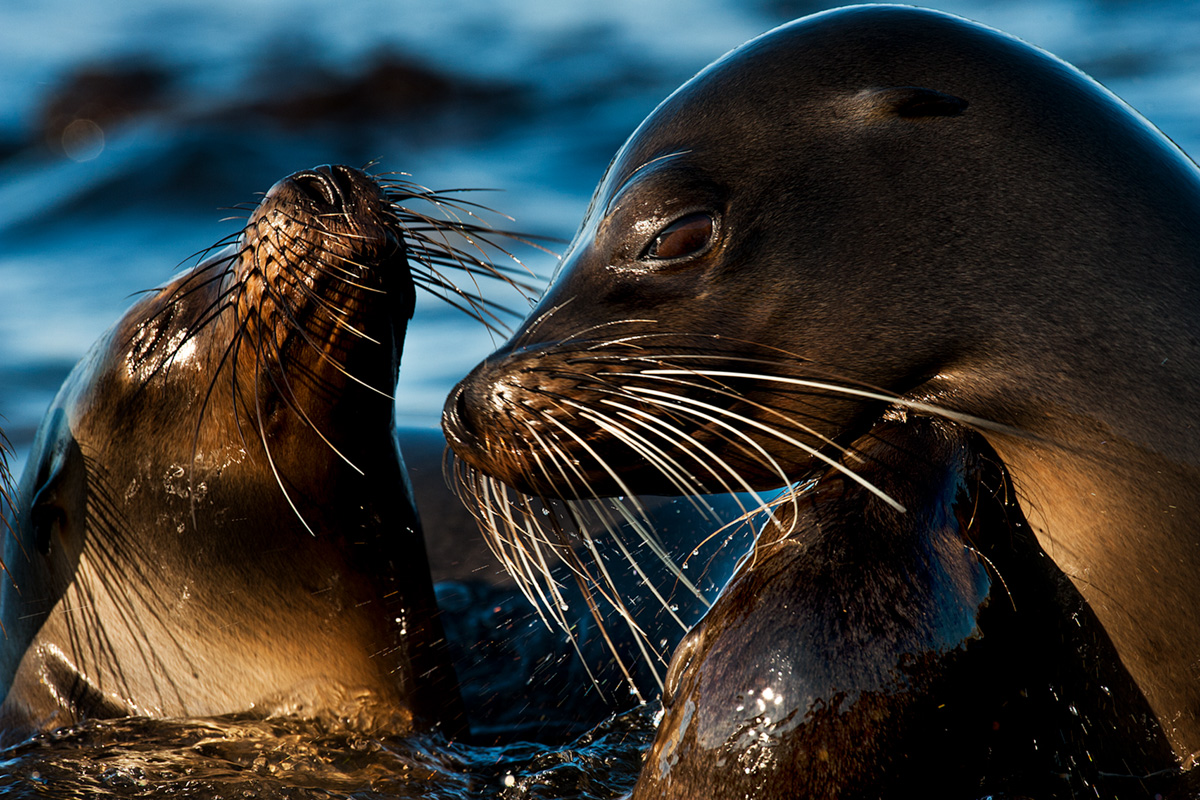
TOUR HIGHLIGHTS
- Visits to several of the Galapagos Islands.
- Seymour Island with marine iguanas and nesting bird colonies.
- Snorkelling with sea turtles, large schools of fish, reef sharks, rays and mantas.
- Visit to the giant tortoise reserve on Santa Cruz Island.
- Private visit to the Charles Darwin Research Station.
- Exploring the city of Quito.
- The volcanic crater Pululahua outside of Quito.
- Bellavista Cloud Forest Reserve and its incredible biological diversity.
- Opportunity to photograph various bird species such as the cliff bird, tanagers, black-tailed nightjars, magnificent frigatebirds and numerous hummingbirds.
- Tuition by photographer Mattias Klum throughout the journey.
- Personal guidance and image evaluation by Mattias Klum.
- Lectures and image discussions with Mattias Klum during the trip.
COUNTRY: Equador PHOTO TYPE: Wildlife TRIP LENGHT: 10 days DATES: November 15-24, 2025 GROUP SIZE: 8-15 guests
GALAPAGOS – THE GARDEN OF EDEN
WITH NAT GEO PHOTOGRAPHER MATTIAS KLUM
The Galapagos Islands is an amazing destination. A fabulous wildlife with marine iguanas, giant turtles, penguins and sea lions guarantees spectacular photos and memories for life. I look forward to experiencing the wildlife on the Galapagos again. You are welcome to discover and take pictures with me.
Mattias Klum
World-renowned National Geographic photographer Mattias Klum will lead this journey following in the footsteps of Charles Darwin and the Beagle to the legendary Galapagos Islands. Here, Mattias has conducted several National Geographic missions with the aim of documenting its wildlife and highlighting the fragility and unique character of the islands. In few places in the world, you will encounter wildlife as intimately as in the Galapagos. Here, you will meet everything from the fascinating marine iguanas, the blue-footed boobies, giant tortoises, to curious sea lions. Beautiful and rugged landscapes alternate with lush greenery, black lava cliffs, and a ever-changing ocean. The Galapagos Islands are listed as a UNESCO World Heritage Site and are considered one of the most unique and biologically outstanding areas in the world.
During our days in Galapagos, we will visit several islands that offer different photographic opportunities and unique subjects every day. Throughout the days, we will also experience the underwater world around Galapagos.
We will also visit the Charles Darwin Foundation and learn more about their research and conservation efforts to save unique species on the islands. Several different species of giant tortoises and other endemic animals live here.
However, the journey will begin with a visit to Ecuador’s amazing rainforests, where you will have the opportunity to photograph its rich birdlife, including tanagers, black-tailed nightjars, magnificent frigatebirds, and numerous hummingbirds.
During the trip, Mattias will help you develop as a photographer both individually and when we work on image processing and group image reviews, all to ensure that you get the most out of your photography and the trip.

TOUR HIGHLIGHTS
- Visits to several of the Galapagos Islands.
- Seymour Island with marine iguanas and nesting bird colonies.
- Snorkelling with sea turtles, large schools of fish, reef sharks, rays and mantas.
- Visit to the giant tortoise reserve on Santa Cruz Island.
- Private visit to the Charles Darwin Research Station.
- Exploring the city of Quito.
- The volcanic crater Pululahua outside of Quito.
- Bellavista Cloud Forest Reserve and its incredible biological diversity.
- Opportunity to photograph various bird species such as the cliff bird, tanagers, black-tailed nightjars, magnificent frigatebirds and numerous hummingbirds.
- Tuition by photographer Mattias Klum throughout the journey.
- Personal guidance and image evaluation by Mattias Klum.
- Lectures and image discussions with Mattias Klum during the trip.
DESTINATIONS
ECUADOR
Ecuador can be likened to a miniature version of South America. The country is only half the size of Sweden but offers a diversity and richness of nature worthy of an entire continent. It has more species of hummingbirds than any other country. Besides the Galapagos, Ecuador also boasts the wildlife of the Andes with its majestic condors, and the Amazon with jaguars, pumas, caimans, and pink dolphins. Ecuador also has the world’s largest variety of frogs. Along the coast, you’ll find miles of beaches, while inland, the highlands spread out with the magnificent Andes, volcanoes, and snow-capped peaks. Ecuador shares borders with Colombia and Peru and gets its name from the fact that the equator cuts right through the northern parts of the country. Ecuador’s capital is Quito, offering a fantastic climate, feeling like a pleasant spring almost year-round. The city has many beautiful churches and other buildings to admire.
BELLAVISTA CLOUD FOREST
This 700-hectare reserve is characterized by sharply angled and deeply forested mountains descending into ravines dotted with rushing waterfalls and crystal-clear streams. It’s a wonderful place to explore the rainforest and its magical diversity of bird and plant life. Bellavista Cloud Forest has over 320 registered bird species. There’s the opportunity to photograph tanagers, antpittas, swallow-tailed nightjars, magnificent frigatebirds, and countless hummingbirds. Some of the mammals found here include the endangered spectacled bear, puma, and tayra.
GALAPAGOS
The Galapagos is an archipelago of 19 islands located on the equator in the Pacific Ocean and is undoubtedly one of the world’s best places to experience and photograph abundant wildlife and nature. Most of the animals on the islands are unafraid of humans, allowing for close encounters with wild animals that can only be found in a few other places in the world. The archipelago belongs to Ecuador and is located approximately 1,000 km west of Ecuador’s mainland. Although the islands are fairly close together, each has something unique to offer and is far from alike.
Because the Galapagos Islands are so isolated, they are home to species that only live on these islands, known as endemic species. 95% of reptile species are found only here, and the same goes for 49% of birds. In the Galapagos, you can photograph sea lions, marine iguanas, land iguanas, Galapagos penguins, flamingos, Galapagos tortoises, Galapagos cormorants, Galapagos herons, lava lizards, and blue-footed boobies. Other things that make this place very special are lagoons, quicksand, volcanoes, fantastic beaches in different colors, lava formations, and much, much more.
Both the land area and the marine reserve of the Galapagos Islands are on UNESCO’s World Heritage List. Only five of the islands are inhabited. The Galapagos Islands became a national park as early as 1959, which meant that 97.5% of the islands’ land area was protected.
ECUADOR
Ecuador can be likened to a miniature version of South America. The country is only half the size of Sweden but offers a diversity and richness of nature worthy of an entire continent. It has more species of hummingbirds than any other country. Besides the Galapagos, Ecuador also boasts the wildlife of the Andes with its majestic condors, and the Amazon with jaguars, pumas, caimans, and pink dolphins. Ecuador also has the world’s largest variety of frogs. Along the coast, you’ll find miles of beaches, while inland, the highlands spread out with the magnificent Andes, volcanoes, and snow-capped peaks. Ecuador shares borders with Colombia and Peru and gets its name from the fact that the equator cuts right through the northern parts of the country. Ecuador’s capital is Quito, offering a fantastic climate, feeling like a pleasant spring almost year-round. The city has many beautiful churches and other buildings to admire.
BELLAVISTA CLOUD FOREST
This 700-hectare reserve is characterized by sharply angled and deeply forested mountains descending into ravines dotted with rushing waterfalls and crystal-clear streams. It’s a wonderful place to explore the rainforest and its magical diversity of bird and plant life. Bellavista Cloud Forest has over 320 registered bird species. There’s the opportunity to photograph tanagers, antpittas, swallow-tailed nightjars, magnificent frigatebirds, and countless hummingbirds. Some of the mammals found here include the endangered spectacled bear, puma, and tayra.
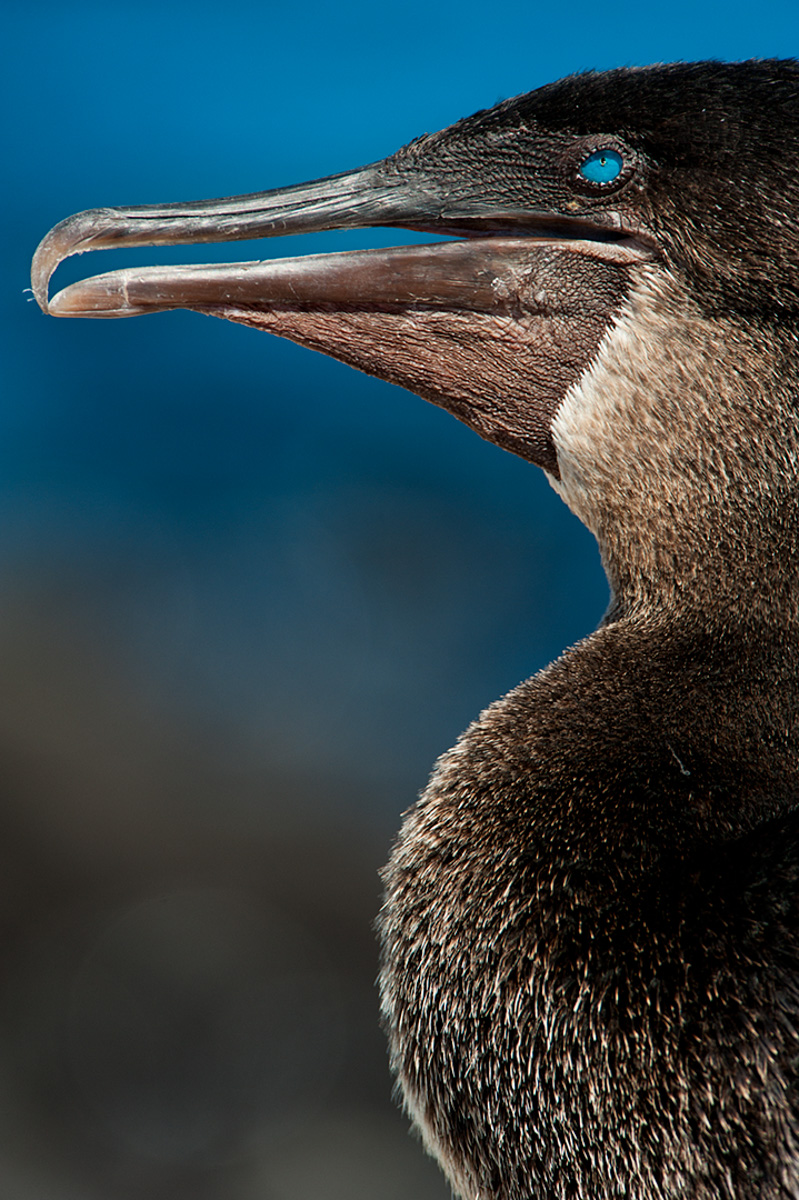
GALAPAGOS
The Galapagos is an archipelago of 19 islands located on the equator in the Pacific Ocean and is undoubtedly one of the world’s best places to experience and photograph abundant wildlife and nature. Most of the animals on the islands are unafraid of humans, allowing for close encounters with wild animals that can only be found in a few other places in the world. The archipelago belongs to Ecuador and is located approximately 1,000 km west of Ecuador’s mainland. Although the islands are fairly close together, each has something unique to offer and is far from alike.
Because the Galapagos Islands are so isolated, they are home to species that only live on these islands, known as endemic species. 95% of reptile species are found only here, and the same goes for 49% of birds. In the Galapagos, you can photograph sea lions, marine iguanas, land iguanas, Galapagos penguins, flamingos, Galapagos tortoises, Galapagos cormorants, Galapagos herons, lava lizards, and blue-footed boobies. Other things that make this place very special are lagoons, quicksand, volcanoes, fantastic beaches in different colors, lava formations, and much, much more.
Both the land area and the marine reserve of the Galapagos Islands are on UNESCO’s World Heritage List. Only five of the islands are inhabited. The Galapagos Islands became a national park as early as 1959, which meant that 97.5% of the islands’ land area was protected.
ITINERARY
TOUR ITINERARY
NOVEMBER 15-24, 2025
DAY 1, (15/11) – ARRIVAL TO QUITO
Arrival to Ecuador’s capital Quito by flight on your own. Gathering at the five-star Illa Experience Hotel during the day. Here you will be greeted by Mattias Klum and Zoom Photo Tours host Daniel Iglesias. In the evening, we’ll have a welcome dinner at a nice local restaurant. This will be an opportunity to get to know each other better and discuss our upcoming photo adventure. (D)
DAY 2, (16/11) – QUITO – BELLAVISTA CLOUD FOREST
Early morning, right after breakfast, we head about an hour northwest to the equator line and the collapsed volcano crater of Pululahua. “Pululahua” means water cloud or fog, a fitting name as the volcano is engulfed in fog almost every afternoon. Pululahua had its major eruption 2,500 years ago, devastating large areas around it. Today, it’s a serene and isolated place for nature lovers, boasting a rich flora with over 2,000 species and plenty of birds and mammals. The crater’s peak is at 2,506 meters above sea level, and during our visit to this fascinating area, we’ll have the opportunity to walk along the crater’s edge where the spectacular views offer plenty of photo opportunities. From Pululahua, we continue towards our next destination, Bellavista Cloud Forest Reserve. Here, the biodiversity is vast with an abundance of largely unexplored flora and fauna. Some of the mammals you may see and photograph include the spectacled bear and tayra, and if we’re lucky, even pumas and the recently discovered olinguito. Upon reaching Bellavista, we climb to the mountaintop and capture the stunning views before exploring the rainforest’s incredible flora and fauna after lunch. Regardless of where we point our cameras, there will be many subjects, and the biological diversity will be evident. In addition to a rich birdlife including tanagers, antpittas, swallow-tailed nightjars, magnificent frigatebirds, and numerous hummingbirds, we’ll encounter a constantly blooming flora with grateful subjects such as orchids and medinilla plants. With our memory cards filled after our rainforest hike, we check into the beautifully located Bellavista Cloud Forest Lodge. (B, L, D)
DAY 3, (17/11) – BELLAVISTA CLOUD FOREST
Early in the morning, we leave our lodge for the opportunity to photograph the imaginative and colorful “Cock of the Rock”. This relatively large bird is Ecuador’s national bird, and during the morning hours, we will visit an area where the bird often comes to eat. Back at the lodge, we’ll have a hearty breakfast and refuel before spending the day exploring the fantastic surroundings we find ourselves in. We hike up into Bellavista Cloud Forest Reserve where we’re greeted by beautiful scenery and enjoy the constantly present photo opportunities. With some luck, we’ll have the chance to photograph magnificent birds like the golden-headed quetzal, chocó toucan, and red-lored parrot. Mattias will be there all the time to provide tips and advice on how to best develop your photography skills. (B, L, D)
DAY 4, (18/11) – BELLAVISTA CLOUD FOREST – QUITO
Before breakfast, we take advantage of the morning light for some nice last photo opportunities in Bellavista Cloud Forest Reserve. After a few days in the rainforest, we head back to Quito, Ecuador’s capital, beautifully located between the Andes mountain range and the western slope of the Guagua Pichincha volcano. In the city’s historic district, which has retained its indigenous charm, we have lunch and take a city walk in the historic part. Here, there will be many subjects, and there will be plenty of time for some street photography. Afterward, we check back into Illa Experience Hotel. In the evening, dinner is served at the very nice Los Geranios restaurant. (B, L, D)
DAY 5, (19/11) – QUITO – GALAPAGOS
Now it’s time for the next stage of our great photo adventure, the legendary Galapagos Islands. After arriving at Baltra Island, which was a US airbase during World War II, our adventure in the Galapagos begins with exploring Santa Cruz Island. We start by photographing the famous giant tortoises unique to Galapagos. These prehistoric giants can grow up to 130 cm long and weigh 200 kg, making them one of the world’s largest living land tortoises. The Galapagos tortoise is listed as “vulnerable” by the International Union for Conservation of Nature (IUCN). One threat is that since the discovery of the isolated Galapagos Islands, humans have introduced new species that have significantly altered the animal’s living conditions. For example, rats and cats can kill young tortoises or destroy eggs. Some introduced domestic animals like goats have also increased competition for food. After our first encounter with Galapagos’ spectacular wildlife, it’s time to experience fascinating landscapes as we hike along “The Gemelos”. Besides a striking view and the opportunity for spectacular landscape pictures, there are also good chances to photograph the island’s endemic barn owl in the area. There are also plenty of other birds such as Galapagos doves, Darwin’s finches, and cattle egrets. After a tasty lunch, we will visit the Charles Darwin Research Station, which is the hub for all scientific research on the Galapagos Islands. It was here that Charles Darwin worked and resulted in his “theory of natural selection” and “evolutionary theory”. His work lives on in the form of the Charles Darwin Research Station. This is where all conservation projects in the Galapagos are directed. Conservation of giant tortoises and marine iguanas is some examples of the center’s work. With Mattias’ contacts at the center, we will have a lecture on conservation efforts. We will also visit an area where giant tortoises mate and lay eggs, as well as where land iguanas are studied. A packed day comes to an end when we check into Galapagos Magic in tents with private bathrooms. Here, we’ll be able to enjoy the mountains and forests surrounding the camp and relax. (B, L, D)
DAY 6, (20/11) – GALAPAGOS
Our first full day in Galapagos takes us to Santa Fé Island. The island is the oldest of the Galapagos Islands, estimated to be up to four million years old, and is unlike many other Galapagos islands not a volcanic island but a result of tectonic activity. Santa Fé has many animal species not found elsewhere, including the large Barrington land iguana, Santa Fe marine iguana, and Santa Fe rice rat. Upon arrival, we anchor in a bay with a pristine white sand beach where sea lions bask in the sun. After photographing the sea lions, we take a hike on the island. As we walk along small trails in search of photo opportunities, we’ll be able to see and photograph iguanas patiently waiting under the large Opuntia echios cacti to eat fallen fruits. Back on the boat, lunch is served, after which we will snorkel in the bay’s crystal-clear waters. You’ll be able to see a variety of tropical fish and perhaps a sea turtle swimming by or a playful sea lion. If we’re really lucky, we might even see a Galapagos shark. After a day at sea, we check in for two nights at the first-class Hotel Ikala Galapagos located in the town of Puerto Ayora not far from the sea. Before dinner, there will be an opportunity to explore Puerto Ayora on your own or perhaps take a dip in the hotel’s pool. (B, L, D)
DAY 7, (21/11) – GALAPAGOS
In the morning, we board a boat for a full day among fascinating wildlife and landscapes on Seymour Island. This small lava island that has risen from the sea has been created by uplift rather than volcanic eruptions. As we move among the low shrub vegetation, we constantly discover new subjects, and the photo opportunities are almost endless. Along the shoreline, we encounter traces of the marine iguanas running up and down near their burrows. At the edge of the sea, there are also plenty of young sea lions surfing the waves. Along the trail that leads us around the island, we’ll find nesting sites of the very photogenic frigatebirds. They build their nests of sticks, which is unusual here in Galapagos. You’ll also find the blue-footed boobies here.
DAY 8, (22/11) – GALAPAGOS
After checking out, we travel by boat to Isabela Island where we check into Hotel Albemarle directly on a pristine white sand beach in the town of Puerto Villamil. Here we will stay for two nights. We start the day with a tour around the small Tintoreras island group. The islands are named after the coral sharks that swim around the islands. Around the islands, we’ll have the opportunity to photograph much of what Galapagos has to offer in terms of wildlife, both above and below the surface. When we land on the small islands, we are greeted by a landscape of black lava rocks. It won’t be long before we see the first of hundreds of marine iguanas that inhabit the cliffs. Here, we’ll have the opportunity to photograph this fascinating animal up close, which only exists in Galapagos. The seemingly small islands have a rich wildlife, and before leaving the land, there are good chances to photograph both penguins, pelicans, and the colorful crabs that illuminate the otherwise dark cliffs. After exploring the wildlife-rich surroundings, it’s time to experience life underwater. Here awaits a fascinating world of curious penguins, sea lions, stingrays, and reef sharks. After snorkeling in the bay around Tintoreras, we return to Isabela Island in the afternoon to explore the largest island in Galapagos. We visit the island’s wetlands where we see colonies of marine iguanas. The area offers rich birdlife and beautiful views of Isabela’s surroundings. If luck is on our side, we may even meet the wild giant tortoises that inhabit the area. Back at the hotel, we have dinner and talk about the day’s experiences. (B, L, D)
DAY 9, (23/11) – GALAPAGOS
Today we head to the small island of Roca Union. In the waters around the island, we have the opportunity to snorkel among colorful fish and curious sea lions. At Turtle Cave, we swim alongside sea turtles, large schools of fish, and with a little luck, we might encounter reef sharks and stingrays. Whether you choose to photograph or just observe everything happening underwater, this will be an experience to remember for a long time. After lunch, we hike along Wetlands Trail where we will see colonies of marine iguanas and several types of mangrove trees which offer exciting photo opportunities. At the end of the trail lies “Wall of Tears”, one of Galapagos’ most famous landmarks. “Wall of Tears” was built during World War II by prisoners of war held at the American base on the islands. The prisoners were forced to build “The Wall” without any other reason than to punish them with hard labor. The nearly 100-meter-long wall was built entirely by hand from the sharp lava rocks. At some places, the wall is almost six meters high and three meters wide. During the hike, we stop at a small pond where you can take a refreshing dip. Back in Puerto Villamil, there’s time to relax and enjoy the pristine white sand beach or just relax under the palm trees. Our journey ends with a delicious farewell dinner at a very nice restaurant in Puerto Villamil. (B, L, D)
DAY 10, (24/11) – RETURN JOURNEY
After some fantastic days among iguanas, sea lions, and giant tortoises, we return by boat to Santa Cruz and then to the airport for onward flights on your own. (B)
FOLLOW-UP MEETING AND TRIP’S PHOTO
A few weeks after returning, Mattias will have a follow-up meeting where we look at each other’s photos. Even before that, you’ll submit your best photos from the trip, after which Mattias will select the “Trip’s Photo” which automatically advances to the final of the “Picture of the Year 2025” competition and competes for great prizes.
NOVMEBER 15-24, 2025
DAY 1, (15/11) – ARRIVAL TO QUITO
Arrival to Ecuador’s capital Quito by flight on your own. Gathering at the five-star Illa Experience Hotel during the day. Here you will be greeted by Mattias Klum and Zoom Photo Tours host Daniel Iglesias. In the evening, we’ll have a welcome dinner at a nice local restaurant. This will be an opportunity to get to know each other better and discuss our upcoming photo adventure. (D)
DAY 2, (16/11) – QUITO – BELLAVISTA CLOUD FOREST
Early morning, right after breakfast, we head about an hour northwest to the equator line and the collapsed volcano crater of Pululahua. “Pululahua” means water cloud or fog, a fitting name as the volcano is engulfed in fog almost every afternoon. Pululahua had its major eruption 2,500 years ago, devastating large areas around it. Today, it’s a serene and isolated place for nature lovers, boasting a rich flora with over 2,000 species and plenty of birds and mammals. The crater’s peak is at 2,506 meters above sea level, and during our visit to this fascinating area, we’ll have the opportunity to walk along the crater’s edge where the spectacular views offer plenty of photo opportunities. From Pululahua, we continue towards our next destination, Bellavista Cloud Forest Reserve. Here, the biodiversity is vast with an abundance of largely unexplored flora and fauna. Some of the mammals you may see and photograph include the spectacled bear and tayra, and if we’re lucky, even pumas and the recently discovered olinguito. Upon reaching Bellavista, we climb to the mountaintop and capture the stunning views before exploring the rainforest’s incredible flora and fauna after lunch. Regardless of where we point our cameras, there will be many subjects, and the biological diversity will be evident. In addition to a rich birdlife including tanagers, antpittas, swallow-tailed nightjars, magnificent frigatebirds, and numerous hummingbirds, we’ll encounter a constantly blooming flora with grateful subjects such as orchids and medinilla plants. With our memory cards filled after our rainforest hike, we check into the beautifully located Bellavista Cloud Forest Lodge. (B, L, D)
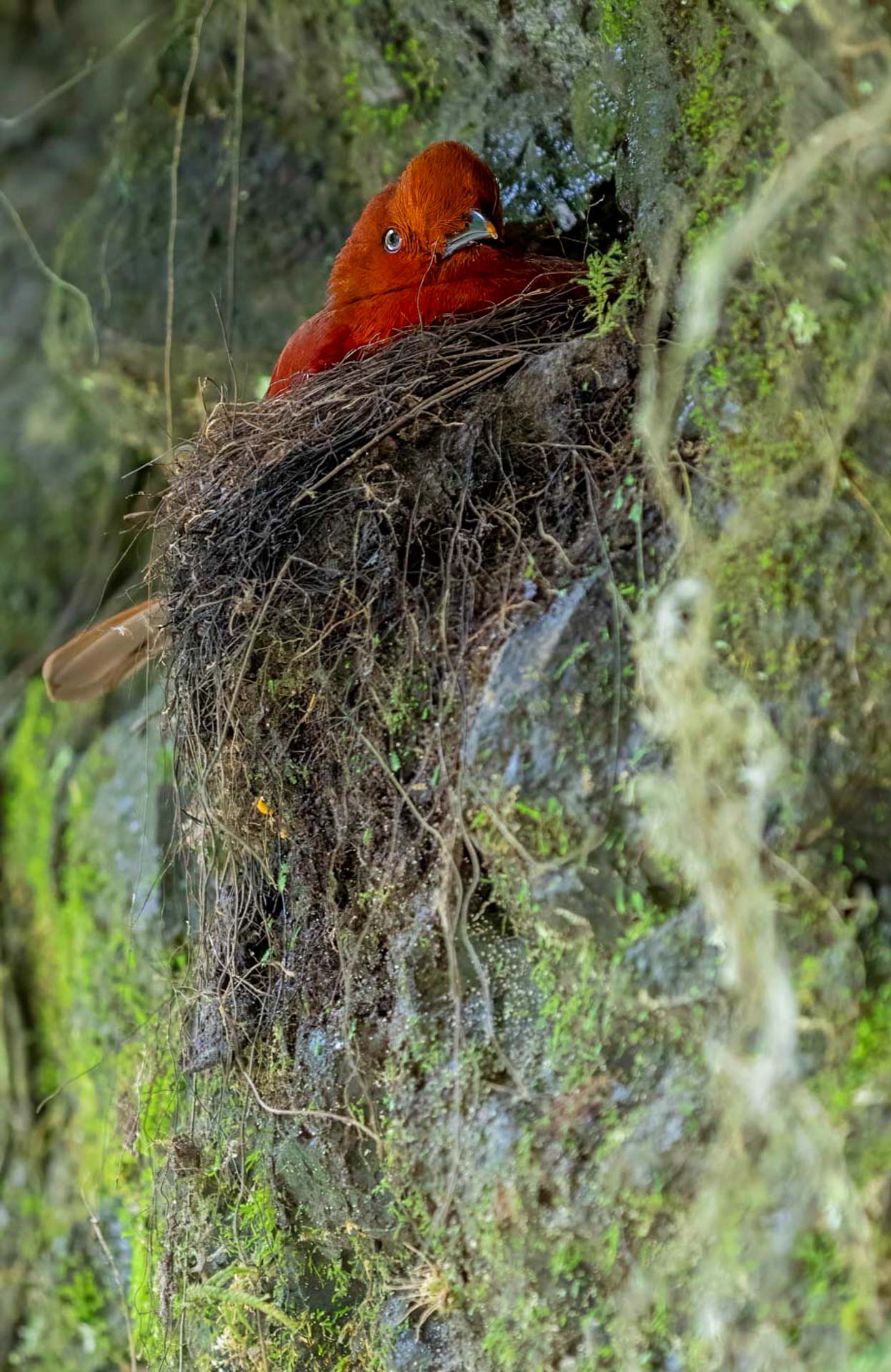
DAY 3, (17/11) – BELLAVISTA CLOUD FOREST
Early in the morning, we leave our lodge for the opportunity to photograph the imaginative and colorful “Cock of the Rock”. This relatively large bird is Ecuador’s national bird, and during the morning hours, we will visit an area where the bird often comes to eat. Back at the lodge, we’ll have a hearty breakfast and refuel before spending the day exploring the fantastic surroundings we find ourselves in. We hike up into Bellavista Cloud Forest Reserve where we’re greeted by beautiful scenery and enjoy the constantly present photo opportunities. With some luck, we’ll have the chance to photograph magnificent birds like the golden-headed quetzal, chocó toucan, and red-lored parrot. Mattias will be there all the time to provide tips and advice on how to best develop your photography skills. (B, L, D)
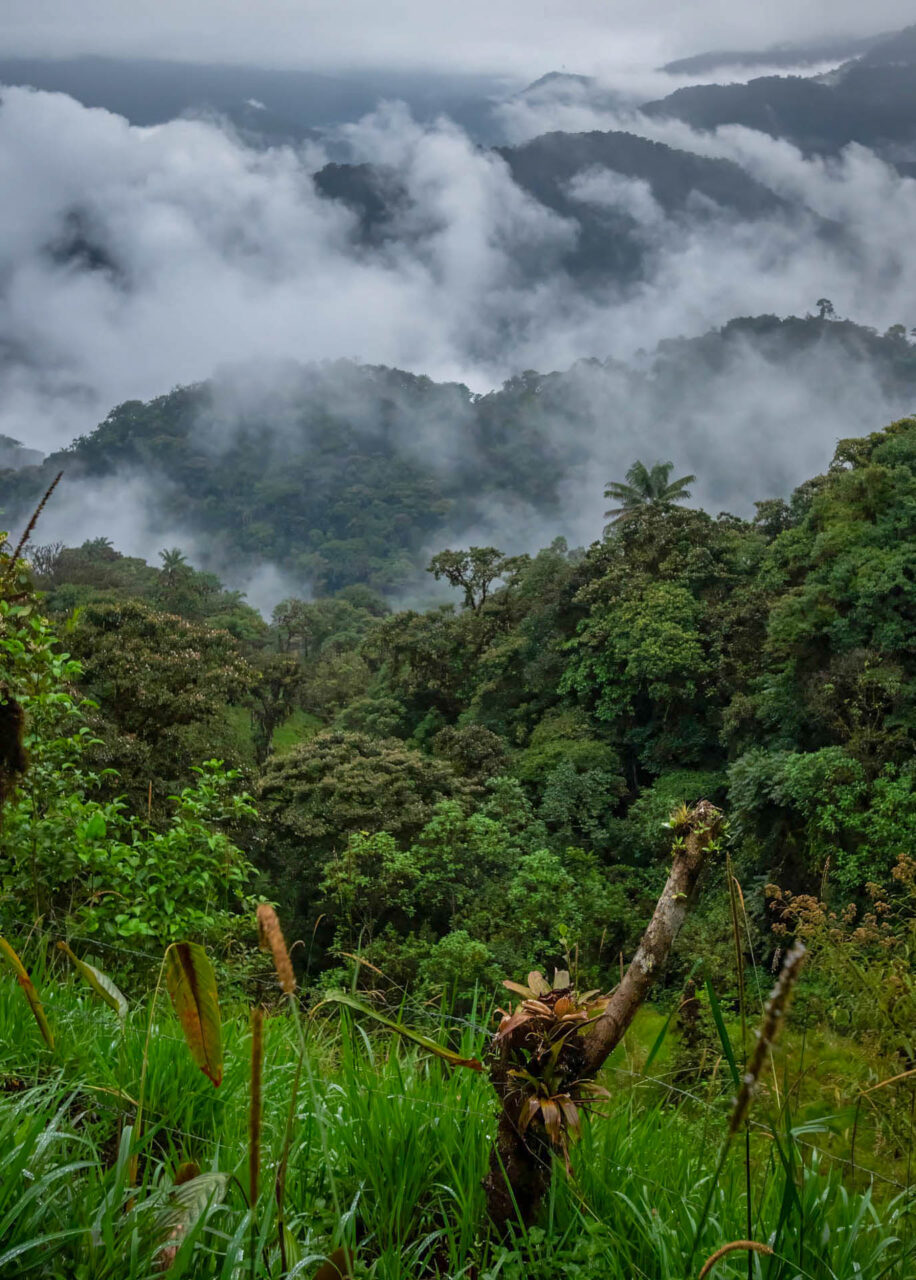
DAY 4, (18/11) – BELLAVISTA CLOUD FOREST – QUITO
Before breakfast, we take advantage of the morning light for some nice last photo opportunities in Bellavista Cloud Forest Reserve. After a few days in the rainforest, we head back to Quito, Ecuador’s capital, beautifully located between the Andes mountain range and the western slope of the Guagua Pichincha volcano. In the city’s historic district, which has retained its indigenous charm, we have lunch and take a city walk in the historic part. Here, there will be many subjects, and there will be plenty of time for some street photography. Afterward, we check back into Illa Experience Hotel. In the evening, dinner is served at the very nice Los Geranios restaurant. (B, L, D)
DAY 5, (19/11) – QUITO – GALAPAGOS
Now it’s time for the next stage of our great photo adventure, the legendary Galapagos Islands. After arriving at Baltra Island, which was a US airbase during World War II, our adventure in the Galapagos begins with exploring Santa Cruz Island. We start by photographing the famous giant tortoises unique to Galapagos. These prehistoric giants can grow up to 130 cm long and weigh 200 kg, making them one of the world’s largest living land tortoises. The Galapagos tortoise is listed as “vulnerable” by the International Union for Conservation of Nature (IUCN). One threat is that since the discovery of the isolated Galapagos Islands, humans have introduced new species that have significantly altered the animal’s living conditions. For example, rats and cats can kill young tortoises or destroy eggs. Some introduced domestic animals like goats have also increased competition for food. After our first encounter with Galapagos’ spectacular wildlife, it’s time to experience fascinating landscapes as we hike along “The Gemelos”. Besides a striking view and the opportunity for spectacular landscape pictures, there are also good chances to photograph the island’s endemic barn owl in the area. There are also plenty of other birds such as Galapagos doves, Darwin’s finches, and cattle egrets. After a tasty lunch, we will visit the Charles Darwin Research Station, which is the hub for all scientific research on the Galapagos Islands. It was here that Charles Darwin worked and resulted in his “theory of natural selection” and “evolutionary theory”. His work lives on in the form of the Charles Darwin Research Station. This is where all conservation projects in the Galapagos are directed. Conservation of giant tortoises and marine iguanas is some examples of the center’s work. With Mattias’ contacts at the center, we will have a lecture on conservation efforts. We will also visit an area where giant tortoises mate and lay eggs, as well as where land iguanas are studied. A packed day comes to an end when we check into Galapagos Magic in tents with private bathrooms. Here, we’ll be able to enjoy the mountains and forests surrounding the camp and relax. (B, L, D)
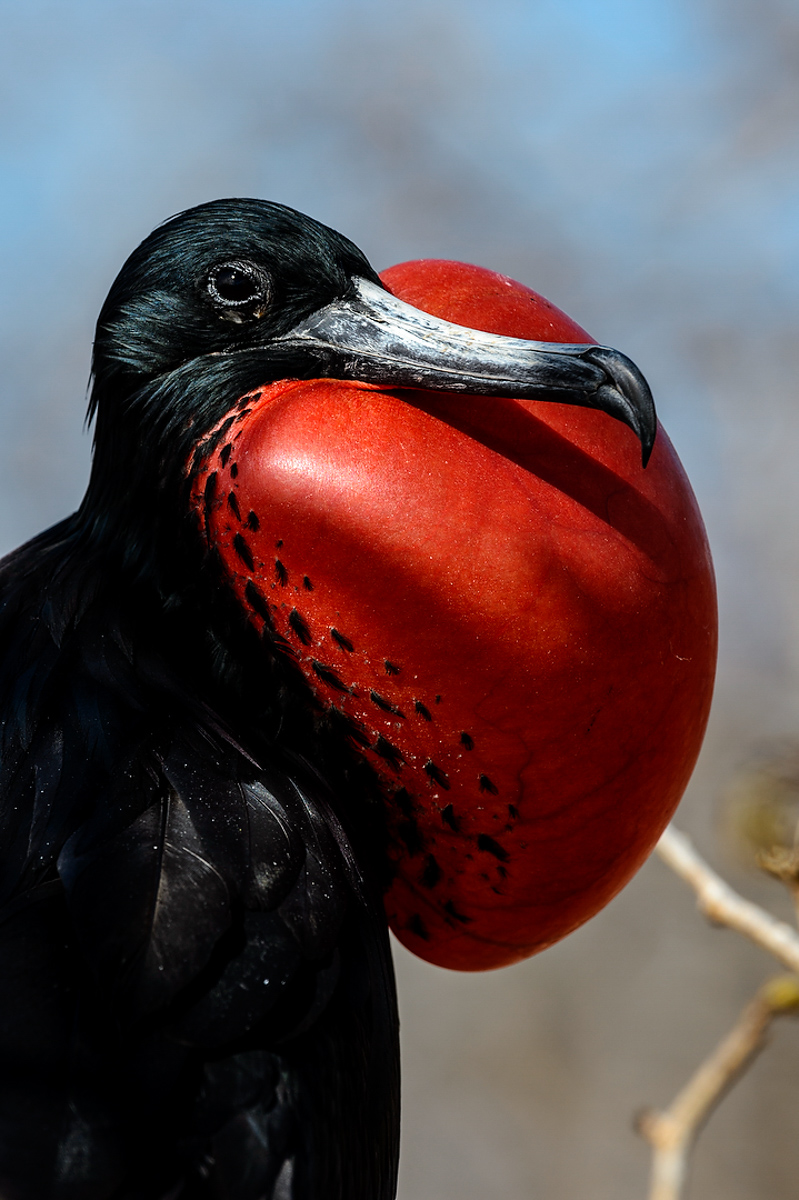
DAY 6, (20/11) – GALAPAGOS
Our first full day in Galapagos takes us to Santa Fé Island. The island is the oldest of the Galapagos Islands, estimated to be up to four million years old, and is unlike many other Galapagos islands not a volcanic island but a result of tectonic activity. Santa Fé has many animal species not found elsewhere, including the large Barrington land iguana, Santa Fe marine iguana, and Santa Fe rice rat. Upon arrival, we anchor in a bay with a pristine white sand beach where sea lions bask in the sun. After photographing the sea lions, we take a hike on the island. As we walk along small trails in search of photo opportunities, we’ll be able to see and photograph iguanas patiently waiting under the large Opuntia echios cacti to eat fallen fruits. Back on the boat, lunch is served, after which we will snorkel in the bay’s crystal-clear waters. You’ll be able to see a variety of tropical fish and perhaps a sea turtle swimming by or a playful sea lion. If we’re really lucky, we might even see a Galapagos shark. After a day at sea, we check in for two nights at the first-class Hotel Ikala Galapagos located in the town of Puerto Ayora not far from the sea. Before dinner, there will be an opportunity to explore Puerto Ayora on your own or perhaps take a dip in the hotel’s pool. (B, L, D)
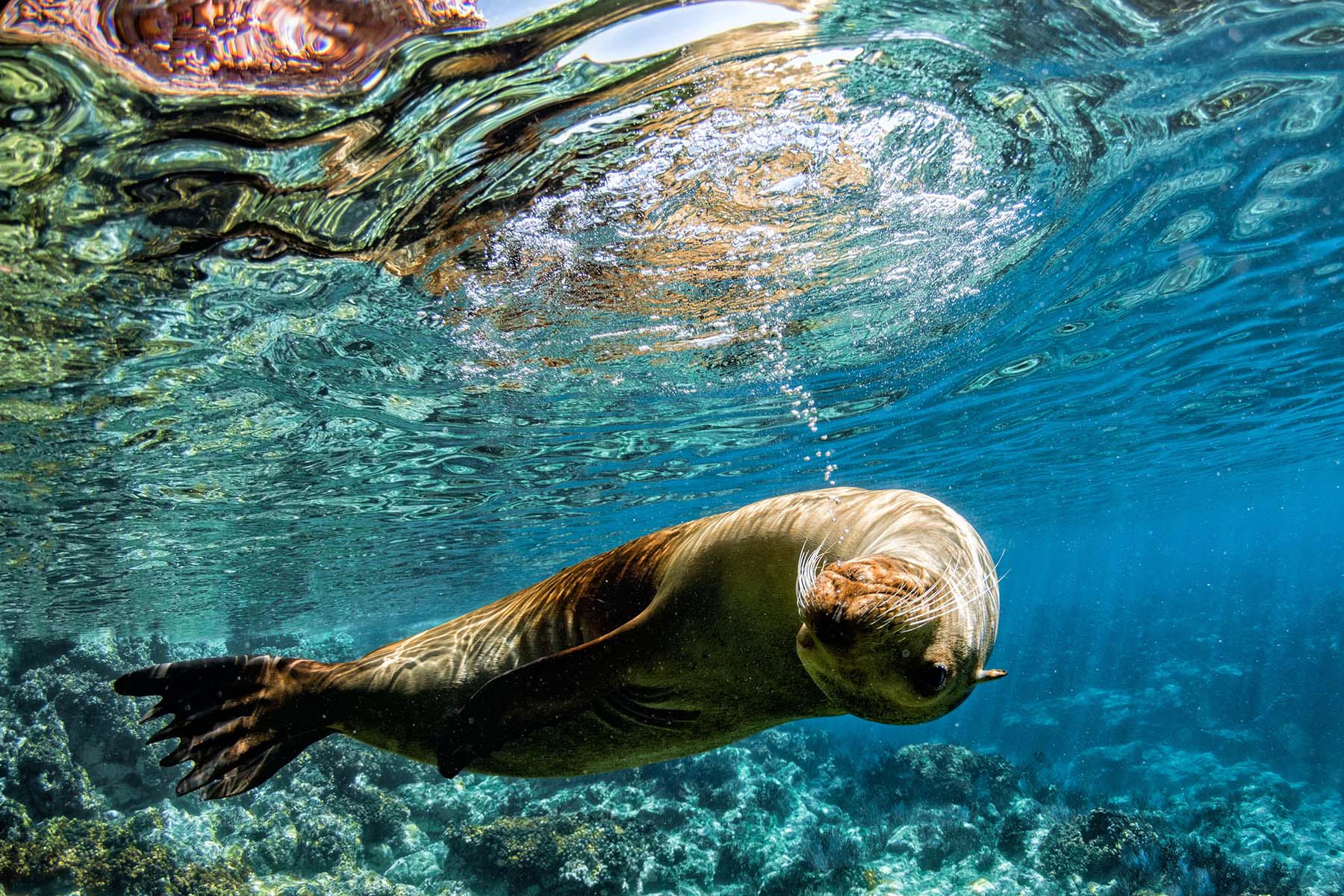
DAY 7, (21/11) – GALAPAGOS
In the morning, we board a boat for a full day among fascinating wildlife and landscapes on Seymour Island. This small lava island that has risen from the sea has been created by uplift rather than volcanic eruptions. As we move among the low shrub vegetation, we constantly discover new subjects, and the photo opportunities are almost endless. Along the shoreline, we encounter traces of the marine iguanas running up and down near their burrows. At the edge of the sea, there are also plenty of young sea lions surfing the waves. Along the trail that leads us around the island, we’ll find nesting sites of the very photogenic frigatebirds. They build their nests of sticks, which is unusual here in Galapagos. You’ll also find the blue-footed boobies here.
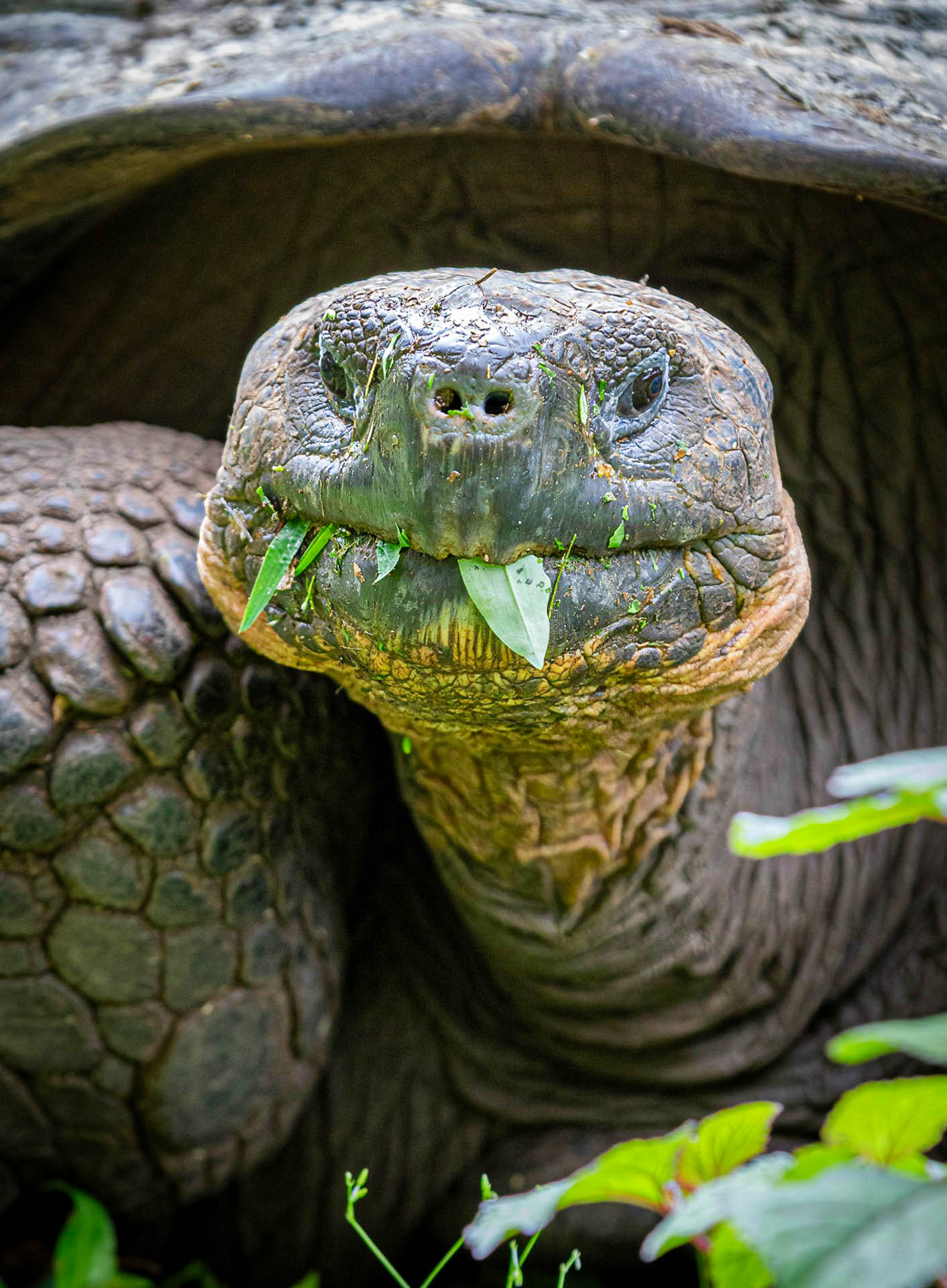
DAY 8, (22/11) – GALAPAGOS
After checking out, we travel by boat to Isabela Island where we check into Hotel Albemarle directly on a pristine white sand beach in the town of Puerto Villamil. Here we will stay for two nights. We start the day with a tour around the small Tintoreras island group. The islands are named after the coral sharks that swim around the islands. Around the islands, we’ll have the opportunity to photograph much of what Galapagos has to offer in terms of wildlife, both above and below the surface. When we land on the small islands, we are greeted by a landscape of black lava rocks. It won’t be long before we see the first of hundreds of marine iguanas that inhabit the cliffs. Here, we’ll have the opportunity to photograph this fascinating animal up close, which only exists in Galapagos. The seemingly small islands have a rich wildlife, and before leaving the land, there are good chances to photograph both penguins, pelicans, and the colorful crabs that illuminate the otherwise dark cliffs. After exploring the wildlife-rich surroundings, it’s time to experience life underwater. Here awaits a fascinating world of curious penguins, sea lions, stingrays, and reef sharks. After snorkeling in the bay around Tintoreras, we return to Isabela Island in the afternoon to explore the largest island in Galapagos. We visit the island’s wetlands where we see colonies of marine iguanas. The area offers rich birdlife and beautiful views of Isabela’s surroundings. If luck is on our side, we may even meet the wild giant tortoises that inhabit the area. Back at the hotel, we have dinner and talk about the day’s experiences. (B, L, D
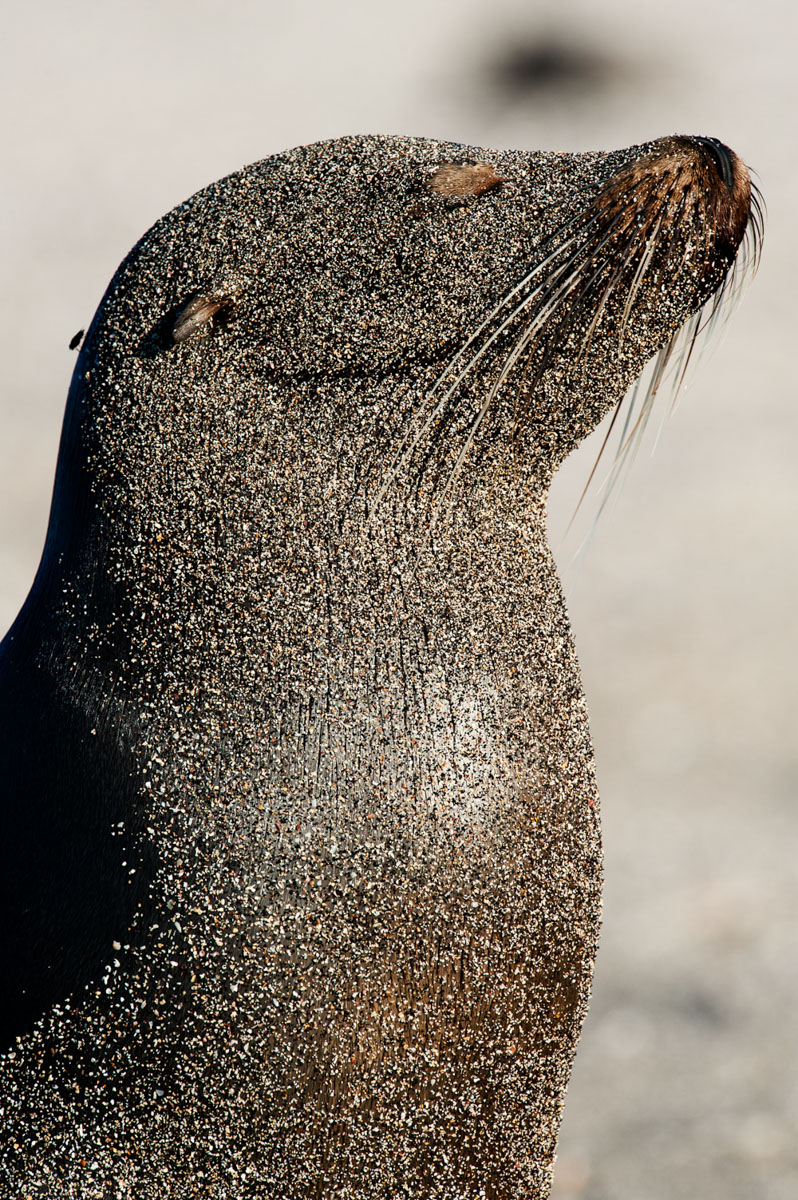
DAY 9, (23/11) – GALAPAGOS
Today we head to the small island of Roca Union. In the waters around the island, we have the opportunity to snorkel among colorful fish and curious sea lions. At Turtle Cave, we swim alongside sea turtles, large schools of fish, and with a little luck, we might encounter reef sharks and stingrays. Whether you choose to photograph or just observe everything happening underwater, this will be an experience to remember for a long time. After lunch, we hike along Wetlands Trail where we will see colonies of marine iguanas and several types of mangrove trees which offer exciting photo opportunities. At the end of the trail lies “Wall of Tears”, one of Galapagos’ most famous landmarks. “Wall of Tears” was built during World War II by prisoners of war held at the American base on the islands. The prisoners were forced to build “The Wall” without any other reason than to punish them with hard labor. The nearly 100-meter-long wall was built entirely by hand from the sharp lava rocks. At some places, the wall is almost six meters high and three meters wide. During the hike, we stop at a small pond where you can take a refreshing dip. Back in Puerto Villamil, there’s time to relax and enjoy the pristine white sand beach or just relax under the palm trees. Our journey ends with a delicious farewell dinner at a very nice restaurant in Puerto Villamil. (B, L, D)
DAY 10, (24/11) – RETURN JOURNEY
After some fantastic days among iguanas, sea lions, and giant tortoises, we return by boat to Santa Cruz and then to the airport for onward flights on your own. (B)
FOLLOW-UP MEETING AND TRIP’S PHOTO
A few weeks after returning, Mattias will have a follow-up meeting where we look at each other’s photos. Even before that, you’ll submit your best photos from the trip, after which Mattias will select the “Trip’s Photo” which automatically advances to the final of the “Picture of the Year 2025” competition and competes for great prizes.
PHOTOGRAPHER
PHOTOGRAPHER
Mattias Klum – National Geographic Photographer
Mattias Klum is Sweden’s most internationally recognized nature photographer and filmmaker. He has worked as a photographer, filmmaker and director on several film and television projects since 1994. Klum is internationally recognized for his way of depicting animals, plants, environments and culture in the form of articles, books, films, lectures and exhibitions. In 1997, Mattia’s photos were published for the first time in National Geographic Magazine. Mattias was then one of the youngest ever to be published in the magazine and the first Swede to get a cover photo. Since then, Mattias has had no less than 13 cover photos and many articles in National Geographic Magazine. Mattias has also published 16 books, produced 12 films, had photo exhibitions all over the world and had pictures and articles published in many of the world’s largest newspapers and magazines.
Mattias Klum – National Geographic Photographer
Mattias Klum is Sweden’s most internationally recognized nature photographer and filmmaker. He has worked as a photographer, filmmaker and director on several film and television projects since 1994. Klum is internationally recognized for his way of depicting animals, plants, environments and culture in the form of articles, books, films, lectures and exhibitions. In 1997, Mattia’s photos were published for the first time in National Geographic Magazine. Mattias was then one of the youngest ever to be published in the magazine and the first Swede to get a cover photo. Since then, Mattias has had no less than 13 cover photos and many articles in National Geographic Magazine. Mattias has also published 16 books, produced 12 films, had photo exhibitions all over the world and had pictures and articles published in many of the world’s largest newspapers and magazines.
ACCOMODATION
ACCOMODATIONS
PRICE, FACTS & BOOKINGS
Price per person: £ 5 530 or USD 6 980
Included:
- Accommodation with shared double rooms at the specified accommodations.
- Meals as per the program (F = Breakfast, L = Lunch, M = Dinner). Bus transfers as per the program.
- Photo activities in Ecuador and in the Galapagos Islands.
- Excursions in Ecuador and in the Galapagos Islands as per the program.
- Boat tours and boat transfers in the Galapagos Islands.
- Various entrance fees. Park fee for Galapagos National Park. Participation of Mattias Klum throughout the workshop.
- Lectures and image reviews led by Mattias Klum.
- Zoom Phototours host Daniel Iglesias will be present during the trip.
- Local guides on site.
- Hotel and other local taxes.
- Travel information prior to departure.
Excluded:
- Flight to Quito and onward to Galapagos round trip.
- Single room supplement. £ 985 or USD 1 240
- Personal expenses such as meal drinks etc.
- Cancellation protection/travel insurance.
FLIGHTS
When it comes to the flights, you should book a through-ticket as follows. This is to include the domestic flight between Quito and Galapagos in the ticket, which means a significantly cheaper flight price than with two separate domestic tickets. The airline that can offer a through-ticket is KLM in collaboration with Avianca and Latam Airlines.
Your departure city – Quito – Galapagos – Your return city.
Once the minimum number of participants is reached, we will send out flight proposals for the above flight route so that everyone books the same flight between Quito and Galapagos.
We recommend that you arrive in Quito a few days before the program starts as it is a long flight and due to the time difference. If you wish to stay after the trip, this is also possible.
If you wish to have assistance with booking flights or extra nights at hotels, we are more than happy to assist you with this. You are welcome to call us at +46 470 466 40, email us at info@zoomphototours.com, or inform us when making your booking.
INFORMATION
Target group: photographers interested in developing their skills in animal and nature photography.
Min/max number of participants: 8/15
Other: for more information about Zoom Photo Expeditions, delivery conditions, etc. see our web under ”other”.
GROUP SIZE
In order to for you to get personal photo guidance and the best experience with our photographer our groups are always small. On this tour the minimum and maximum number of guests are 8/ 15.
PHOTO GEAR
- System camera
- A standard zoom lens ranging from 24 to 200 mm for landscape photography.
- A long telephoto lens up to 500 mm for wildlife and nature photography.
- A monopod or tripod.
- Memory cards and a card reader.
- Extra batteries and charger. A cleaning kit for the camera/lenses.
- A laptop with software such as Photoshop CS or Lightroom.
- If you have one, please bring an underwater camera.
TOUR LEADER
Apart from an award winning photographer, our tours are always accompanied by a tour leader from Zoom with good photo knowledge. Our tour leader will handle all logistics and general matters and make sure your having the best possible experience in Equador.
TERMS & CONDITIONS
For more information about Terms & Conditions please click here
BOOKING
You can book the trip by clicking on the button below. You are also welcome to call us on the phone +46 470 466 40 or email us at info@zoomphototours.com
PRICE
Price per person: £ 5 530 or USD 6 980
Included:
- Accommodation with shared double rooms at the specified accommodations.
- Meals as per the program (F = Breakfast, L = Lunch, M = Dinner). Bus transfers as per the program.
- Photo activities in Ecuador and in the Galapagos Islands.
- Excursions in Ecuador and in the Galapagos Islands as per the program.
- Boat tours and boat transfers in the Galapagos Islands.
- Various entrance fees. Park fee for Galapagos National Park. Participation of Mattias Klum throughout the workshop.
- Lectures and image reviews led by Mattias Klum.
- Zoom Phototours host Daniel Iglesias will be present during the trip.
- Local guides on site.
- Hotel and other local taxes.
- Travel information prior to departure.
Excluded:
- Flight to Quito and onward to Galapagos round trip.
- Single room supplement. £ 985 or USD 1 240
- Personal expenses such as meal drinks etc.
- Cancellation protection/travel insurance.
FLIGHTS
When it comes to the flights, you should book a through-ticket as follows. This is to include the domestic flight between Quito and Galapagos in the ticket, which means a significantly cheaper flight price than with two separate domestic tickets. The airline that can offer a through-ticket is KLM in collaboration with Avianca and Latam Airlines.
Your departure city – Quito – Galapagos – Your return city.
Once the minimum number of participants is reached, we will send out flight proposals for the above flight route so that everyone books the same flight between Quito and Galapagos.
We recommend that you arrive in Quito a few days before the program starts as it is a long flight and due to the time difference. If you wish to stay after the trip, this is also possible.
If you wish to have assistance with booking flights or extra nights at hotels, we are more than happy to assist you with this. You are welcome to call us at +46 470 466 40, email us at info@zoomphototours.com, or inform us when making your booking.
INFORMATION
Target group: photographers interested in developing their skills in animal and nature photography.
Min/max number of participants: 8/15
Other: for more information about Zoom Photo Expeditions, delivery conditions, etc. see our web under ”other”.
GROUP SIZE
In order to for you to get personal photo guidance and the best experience with our photographer our groups are always small. On this tour the minimum and maximum number of guests are 8/ 15.
PHOTO GEAR
- System camera
- A standard zoom lens ranging from 24 to 200 mm for landscape photography.
- A long telephoto lens up to 500 mm for wildlife and nature photography.
- A monopod or tripod.
- Memory cards and a card reader.
- Extra batteries and charger. A cleaning kit for the camera/lenses.
- A laptop with software such as Photoshop CS or Lightroom.
- If you have one, please bring an underwater camera.
TOUR LEADER
Apart from an award winning photographer, our tours are always accompanied by a tour leader from Zoom with good photo knowledge. Our tour leader will handle all logistics and general matters and make sure your having the best possible experience in Equador.
TERMS & CONDITIONS
For more information about Terms & Conditions please click here
BOOKING
You can book the trip by clicking on the button below. You are also welcome to call us on the phone +46 470 466 40 or email us at info@zoomphototours.com
OUR NEWSLETTER
Be the first to hear about new tours, offers and travel inspiration from Zoom Phototours.
Newsletter
CONTACT
E-mail: info@zoomphototours.com
Telephone: +46 (0)470 – 466 40
Follow our photo adventures on social media.
Photo: Serkan Gunes
OUR NEWSLETTER
Be the first to hear about new tours, offers and travel inspiration from Zoom Phototours.
Newsletter
CONTACT
E-mail: info@zoomphototours.com
Phone: +46(0) 470 – 466 40
Follow our photo adventures on social media.

